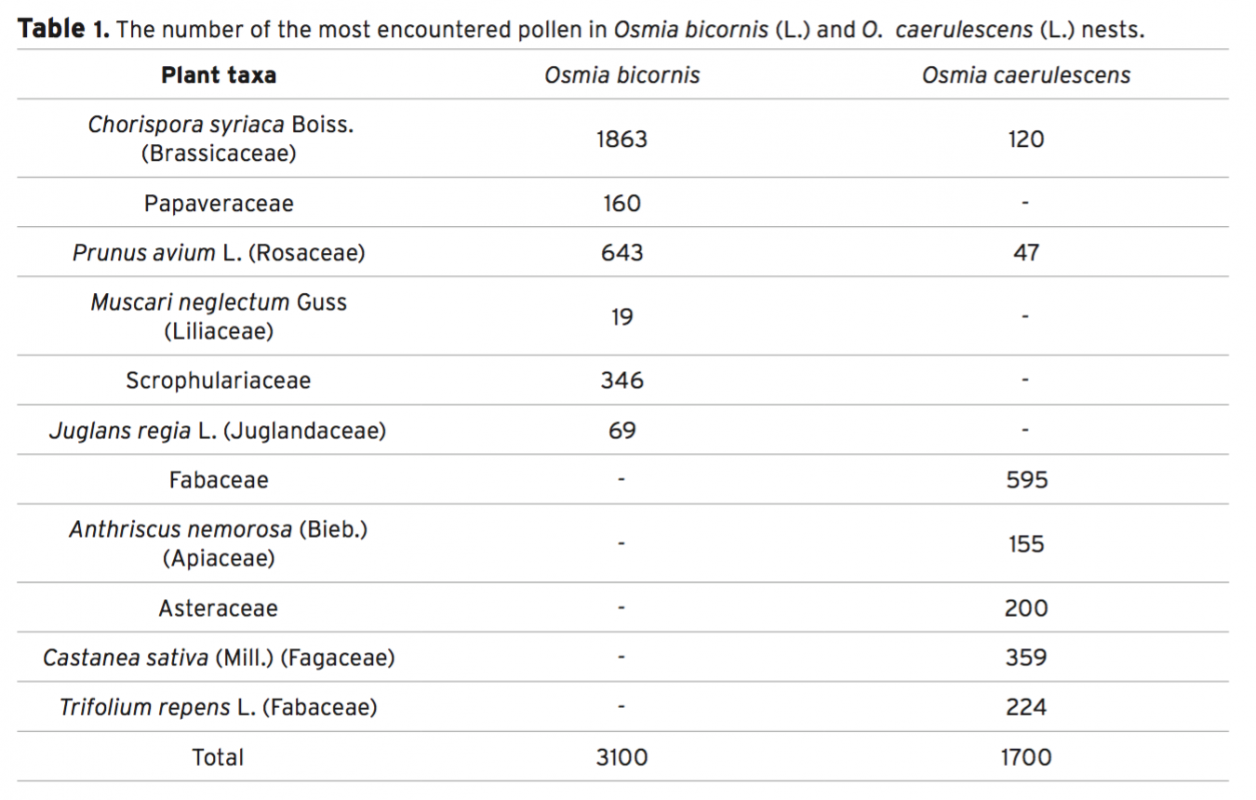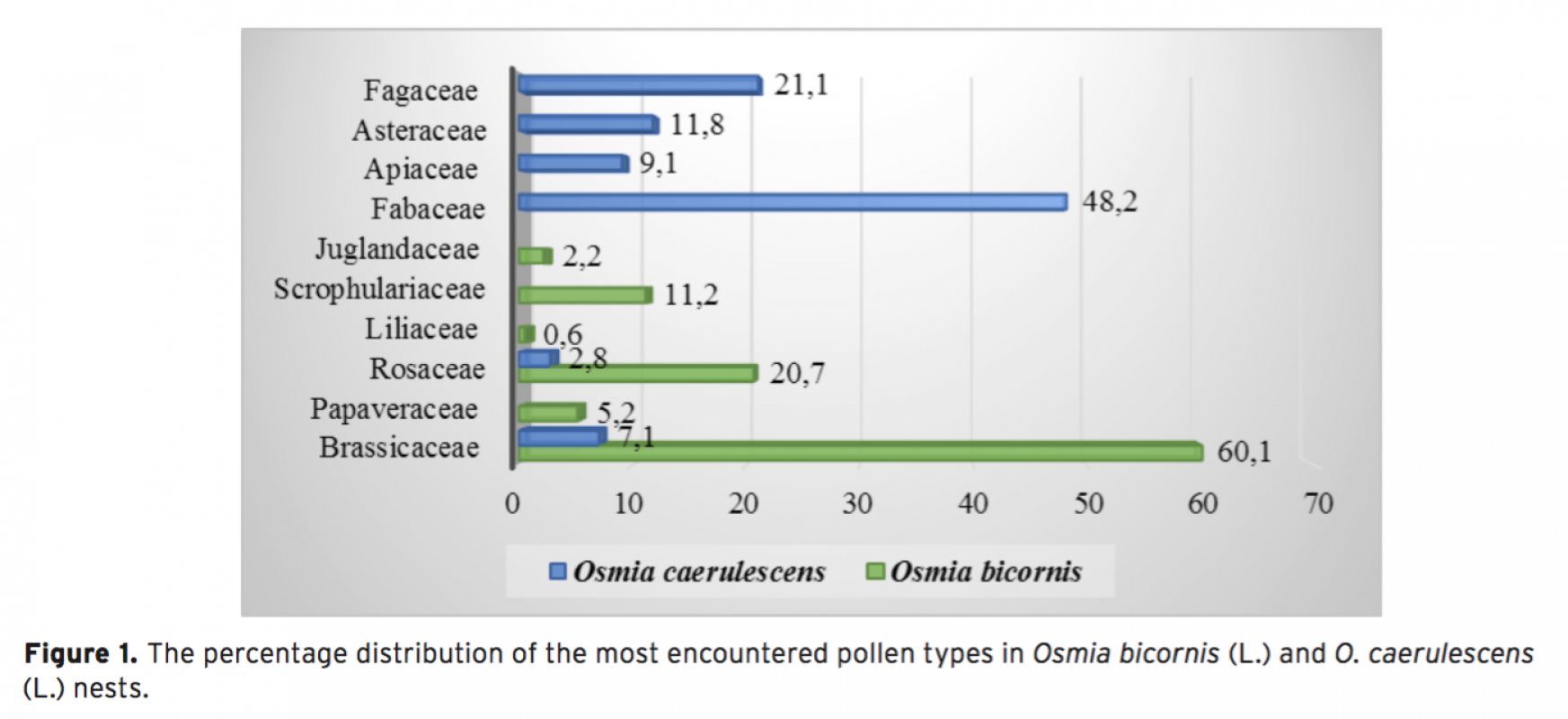Osmia species (Hym.: Megachilidae) are important because they can continue even their pollinator activity in orchards in the unfavourable weather conditions for honey bees. In the study, the pollen encountered in the artificial nests of Osmia bicornis (L.) and O. caerulescens (L.) used for supporting their populations in the sweet cherry orchards were analysed. The nests were established in two cherry orchards of Sultandağı town (Afyonkarahisar, Turkey) in April of 2009 and 2010 and removed in September of the same years. Pollen samples were obtained from total 11 nests of O. bicornis and 6 nests of O. caerulescens. Total 4800 pollen grains were examined. As a result of the diagnosis studies of pollen grains, it determined that two species collected the pollens of 6 families and that the dominant pollen group belonged to the Brassicaceae (60.1%) for O. bicornis while Fabaceae (48.2%) for O. caerulescens. The second pollen group were Rosaceae (20.7%) for O. bicornis while Asteraceae (11.8%) for O. caerulescens. In the nests of O. caerulescens, 2.8% Rosaceae pollen were encountered. According to these results, the effect of O. bicornis is higher than O. caerulescens’s on sweet cherry pollination.
Osmia türleri (Hym.:Megachilidae) bal arısı için uygun olmayan hava koşullarında bile meyve bahçelerindeki polinasyon aktivitelerini devam ettirebildikleri için önemlidir. Çalışmada, kiraz bahçelerinde popülasyonlarını desteklemek için yapay yuvalarda yuvalandırılan Osmia bicornis (L.) ve O. caerulescens (L.)’in yuvalarında rastlanan polenler analiz edilmiştir. Yuvalar, Sultandağı ilçesinin (Afyonkarahisar, Türkiye) iki kiraz bahçesine 2009 ve 2010 yıllarının Nisan ayında kurulmuş, aynı yılların Eylül ayında kaldırılmıştır. Polen örnekleri, O. bicornis’in 11, O. caerulescens’in ise 6 yuvasından elde edilmiştir. Toplam 4800 polen zerresinin incelenmesi sonucunda, iki türün 6 familyanın polenlerini topladığı ve dominant polen grubunun O. bicornis için Brassicaceae (%60.1)’ye, O. caerulescens için Fabaceae (%48.2)’e ait olduğu belirlenmiştir. İkinci polen grubu O. caerulescens için Asteraceae (%11.8) iken, O. bicornis için Rosaceae (%20.7) olmuştur. O. caerulescens yuvalarında %2.8 oranında Rosaceae polenine rastlanmıştır. Bu sonuçlara göre, O. bicornis’in kirazın polinasyonundaki etkisi O. caerulescens’inkinden daha yüksek gibi görünmektedir.


Download Article in PDF (146.7 kB)